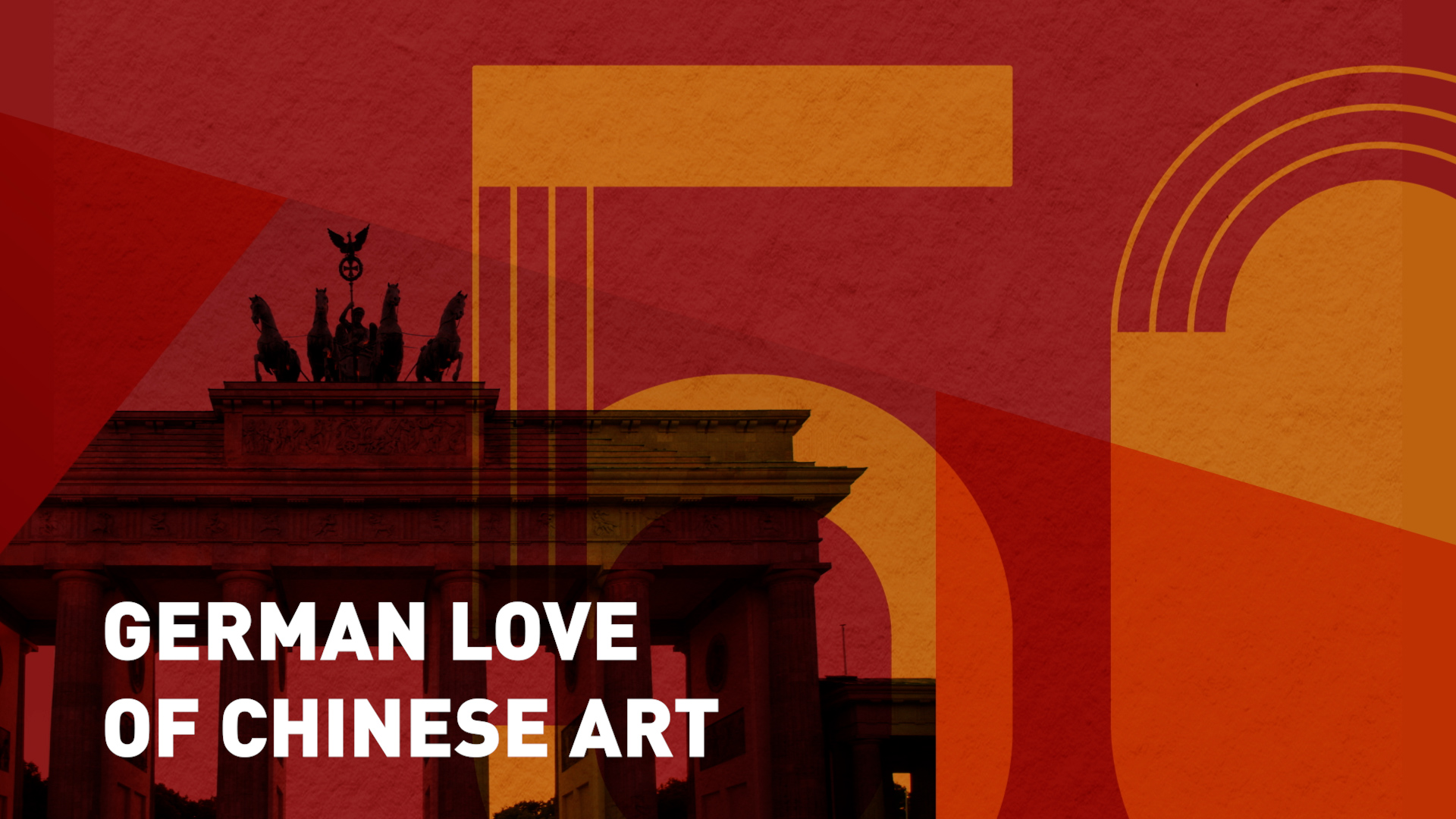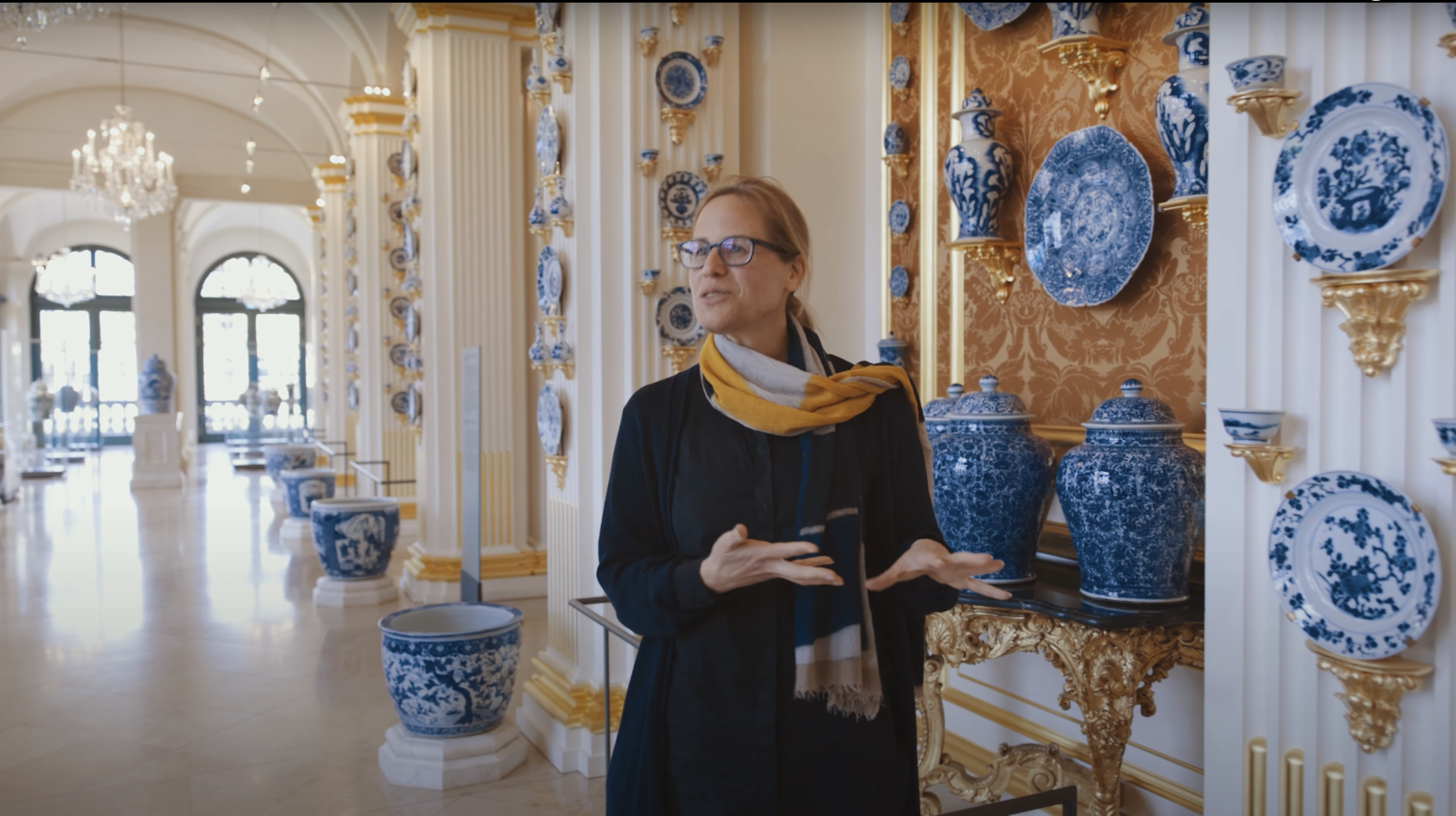03:28

The first permanent gallery of East Asian Art was opened in Berlin nearly 100 years ago, highlighting the appreciation many in the Germanic world had for Chinese craftsmanship and artistry.
Chinoiserie
In the 17th and 18th centuries it was known as "Chinoiserie": evidence of a long tradition of interest in Chinese art in Germany, according to Dr. Yan Xu-Lackner, the Director of the Konfuzius Institute Nürnberg-Erlangen.
White Gold
The institute is producing a series called "On the Trail of Chinese Art", exploring Chinese art collections in museums and private homes across German-speaking countries.
"In the first episode you learn how August the Strong exchanged 600 soldiers for Chinese porcelain owned by the King of Prussia and I think that's incredible," Xu-Lackner told CGTN.
Much of this porcelain collection can be found in the State Art Collection in the east German city of Dresden, one of the largest and most valuable of its kind.
This passion for Chinese porcelain or "white gold" in particular was found in almost every collection they explored. Ronald Kiwitt, the art director at the Konfuzius-Institut Nürnberg-Erlangen and producer of the series dedicated two entire episodes to it.
"For many people, China has a very high value from the artistic perspective" he told CGTN. "We don't try to arouse this fascination, but rather continue it. We reflect this passion for Chinese objects in Germany, starting with porcelain, textiles, courtly art bronze found from the 18th century in Dresden, to Prussia, and through the bourgeois collections."

A screenshot from the series: On the Trail of Chinese Art, produced by the Konfuzius Institute Nürnberg-Erlangen.
A screenshot from the series: On the Trail of Chinese Art, produced by the Konfuzius Institute Nürnberg-Erlangen.
Stolen Art
However, some advocates say this centuries long recognition of Chinese artistry may have led to the illegal acquisition of more than ten million Chinese cultural treasures over the past 100+ years, with thousands of them possibly in Germany.
That is why many museums across the country are researching their Chinese collections for potentially looted relics.
"The question of provenance is always an issue," says Kiwitt. "It was therefore also very, very important to us that we also pursued this question. There are some museums that are aware that individual objects may be critical, but these museums are not part of our film production."
Building Bridges
It is hoped that this beautifully produced multi-part art-historical journey will also open up more conversations and understanding between the two cultures says Dr. Xu-Lackner.
"Art also has a lot to do with how one perceives a country," she concludes. "I think because the environment is very political, so to speak, so occupied with negative images, we have to keep up the dialogue all the more. And in that respect, I find our films about traditional China or about traditional art from China are the impetus for us to talk about China in general."
The Konfuzius Institute Nürnberg-Erlangen has been screening its series still in production, to an interested public and on the institute's youtube channel.
Cover photo: One of the pieces shown in the series 'On the Trail of Chinese Art', produced by the Konfuzius Institute Nürnberg-Erlangen.